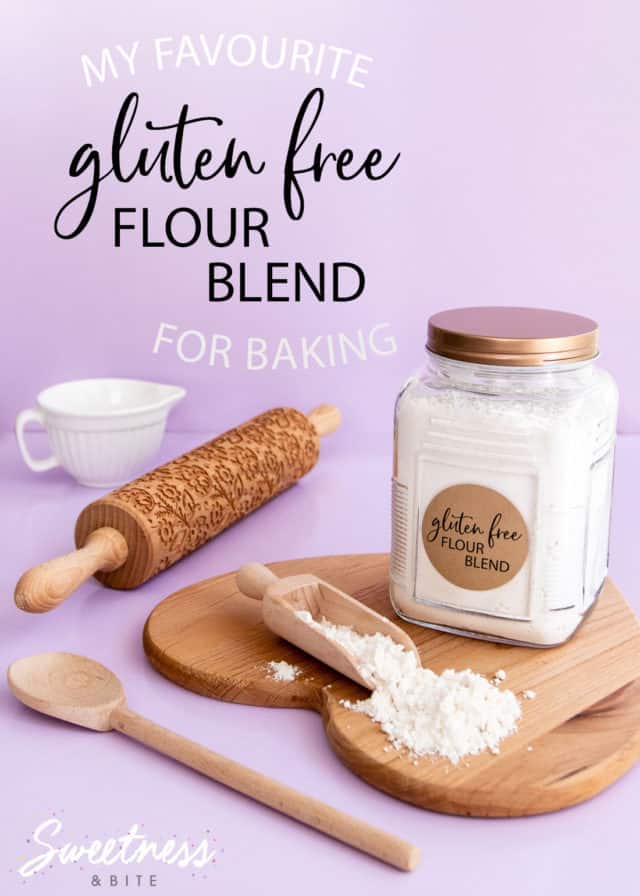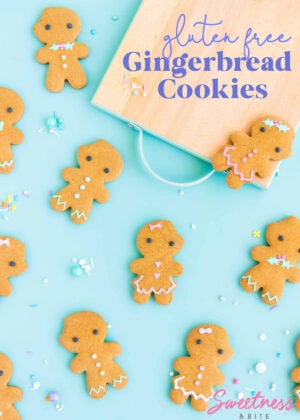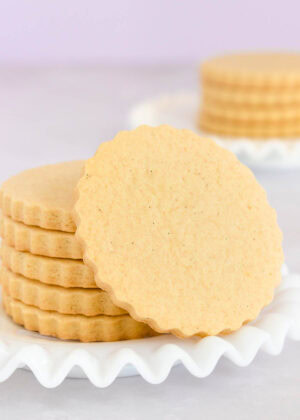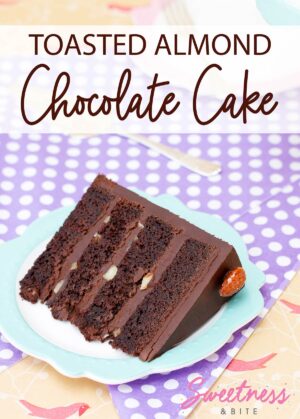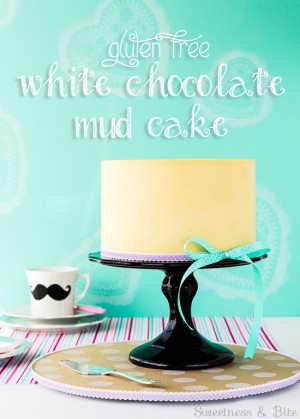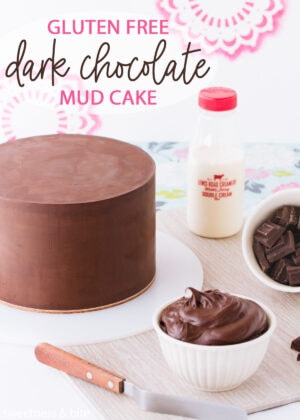Gluten Free Flour Blend for Baking
This post may contain affiliate links to products I recommend. I receive a small commission at no cost to you if you make a purchase using my link.
My all-time favourite gluten free flour blend for baking. With just three ingredients, this all-purpose flour blend recipe is perfect for cakes, cupcakes, cookies, muffins, slices and so much more!
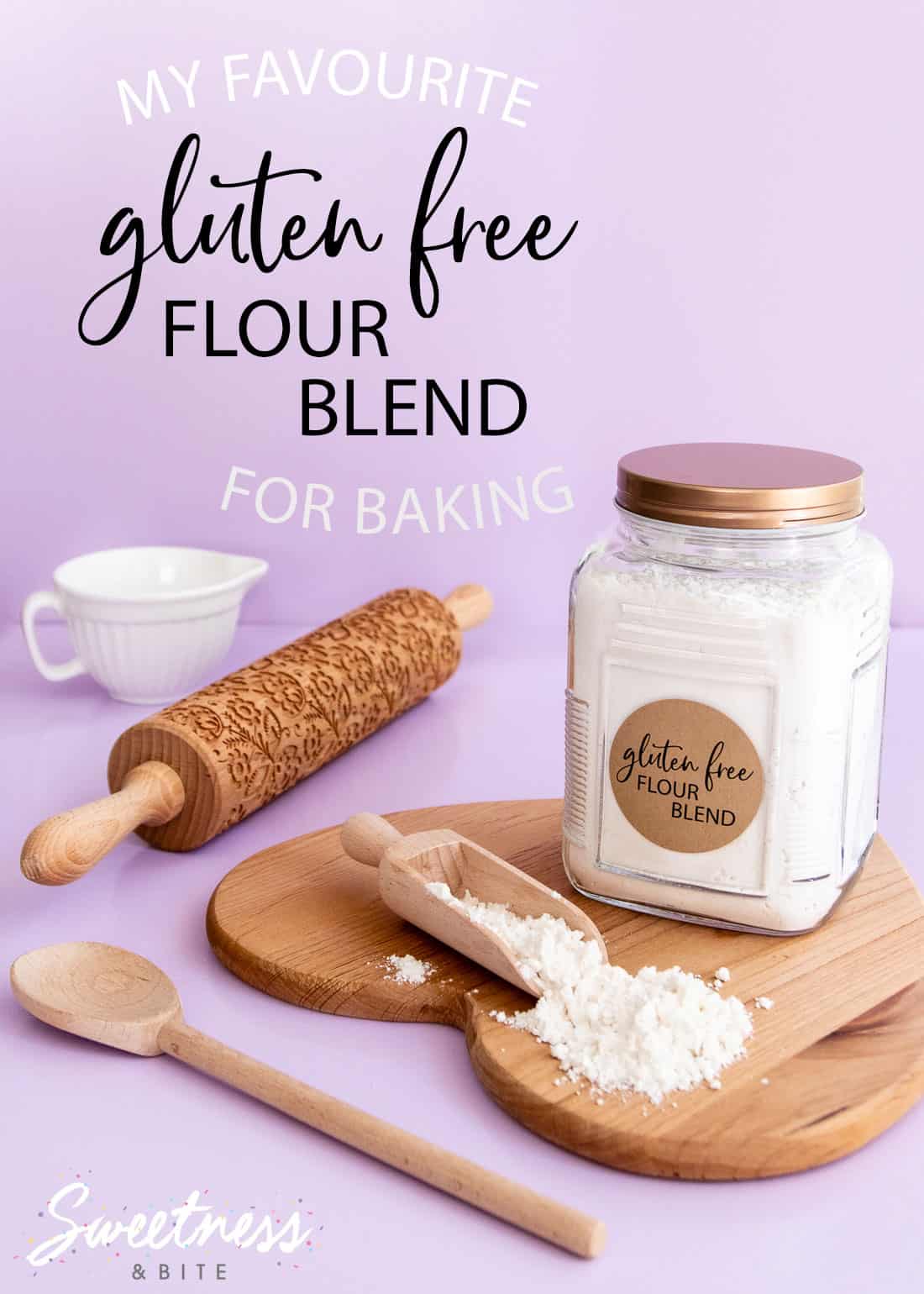
There are a few things that can feel overwhelming when you first start baking without gluten, but I think we can probably all agree that the most overwhelming is “what kind of gluten free flour mix should I use?!”
There are many pre-made gluten-free flour blends on the market, and a quick Google search will provide you will a whole heap of recipes for making your own blend.
When I first started baking with gluten free flour I tried every boxed mix that was available in our supermarket and was soon disheartened with the crumbly, dry results – was there no way to make gluten free baked goods that even slightly resembled their gluten-y counterparts?
I eventually gave up on the boxed blends and began experimenting with DIY gluten-free flour blends. I tried a bunch of different recipes that I found online and quickly found myself with at least a dozen different kinds of gluten-free flours and starches in the pantry.
The thing with gluten-free flours and starches is that they all have different properties and sadly no individual gluten-free ingredient is a direct substitute for wheat flour.
Gluten may have become a bit of a dirty word in some circles over the past decade or so, but one thing is for sure – wheat flour is a jack of all trades. Aside from the differences in all-purpose, high-grade (bread) flour and cake/pastry flour, wheat flour can pretty much do whatever you want it to.
Some of the homemade gluten-free flour blends I tried had 6+ different flours and/or starches in them to try and mimic the properties of wheat flour. And because I hadn’t yet settled on a blend I liked, I was mixing up the flours each time I baked. That’s a lot of extra measuring and mixing.
A few years after I started experimenting with different flour blends, I came to realise that I was actually not using most of the flours in our pantry. Instead, I was gravitating to the same three ingredients for most of my baking – tapioca starch, brown rice flour and potato starch.
For a long time, I continued mixing the three flours together each time I baked, but once I finally settled on the ratios of each one that worked best for me, I started to mix up larger batches of flour and kept it in the pantry.
Oh boy, I suddenly felt like half the work of baking had been removed. I had apparently somehow managed to kid myself that it wasn’t that much of a hassle to mix them up each time, but once I started keeping this blend in the pantry I remembered the joy of being able to reach for just one container of flour 🙌🏻
For me, this is definitely The Best gluten free flour for baking.
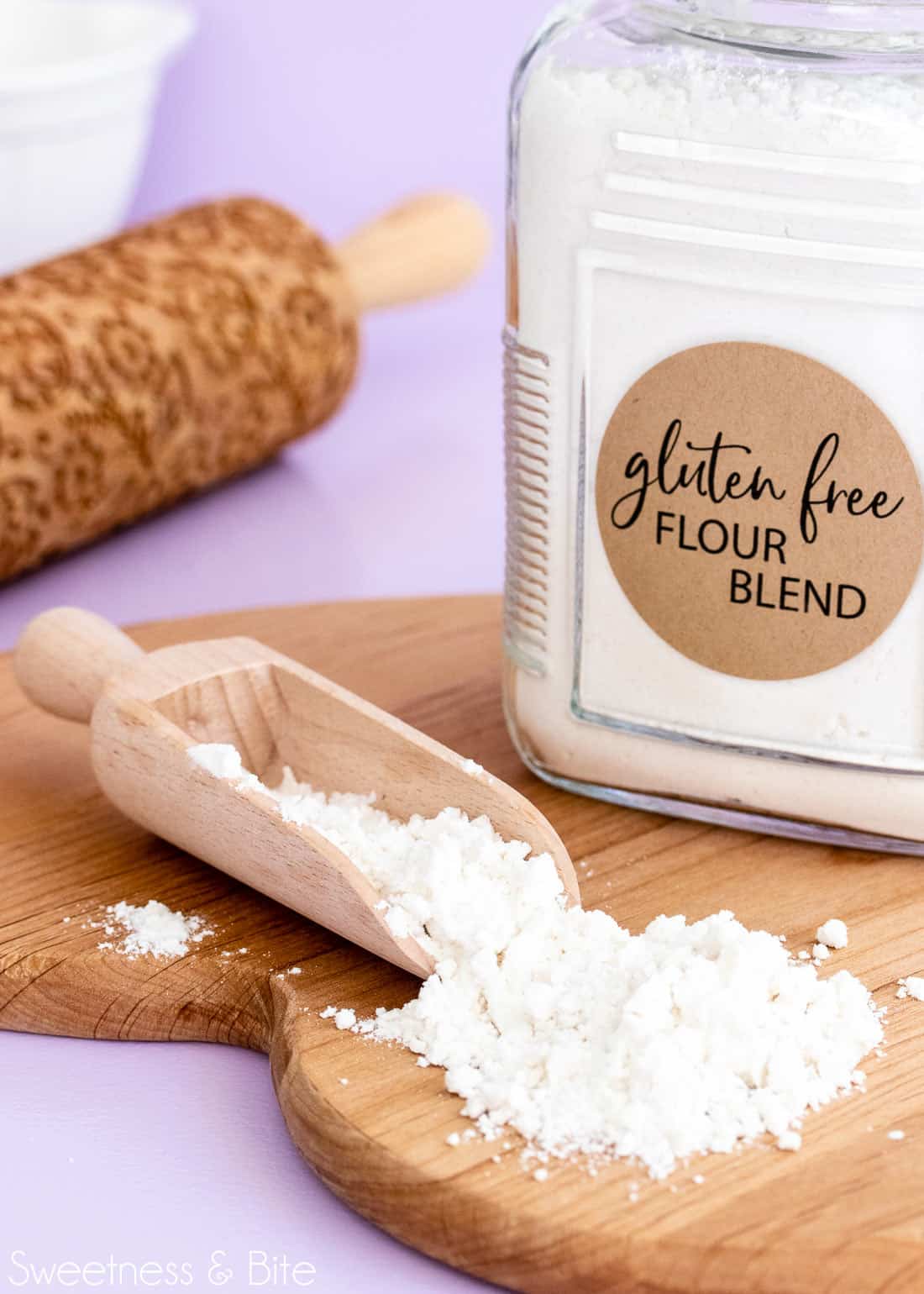
I started this blog a couple of years after I started doing mostly (and eventually, all) gluten-free baking, so some of my earlier recipes list different flours in the ingredients. In most recipes, I have simply listed “gluten-free flour” in the ingredients, and then specified which flours I used in the notes section. This was so that readers could choose to use their own favourite flour blend if they preferred.
But every one of the recipes on Sweetness & Bite will work with this flour blend unless I have specified otherwise.
Can I explain in detail why this particular gluten-free flour mix works so well for me? No, I can’t. Is there a scientific reason why my cakes turn out well when I use these particular flours? If there is, I don’t know what it is. But the fact that it does work really well is all the reason I need to keep using it.
This gluten free flour blend works really well for baking:
- Cakes
- Cupcakes
- Cookies / Biscuits
- Brownies
- Slices
- Scones
- Muffins
- Quick-mix breads
Actually, pretty much anything that I’ve baked with this blend has worked well. The only thing I haven’t tested this with extensively is gluten-free yeast bread.
For a quick-fire Q+A, make sure you check out the bottom of the post.
GLUTEN-FREE FLOUR BLEND INGREDIENTS
Here is a very brief introduction to each of the flours in the recipe:
TAPIOCA STARCH
Tapioca starch is made from the root of the cassava plant. It is made up of mostly carbohydrates and has a bland, neutral taste and smell. It has very little nutritional value, but it is very helpful in giving baked goods a nice light texture.
Tapioca starch is often sold as “tapioca flour”, and these are generally the same product.
BROWN RICE FLOUR
Brown rice flour is, rather obviously, made from ground brown rice. Unlike white rice flour, the bran layer and germ are not removed from the rice grains, which makes brown rice more nutritious and higher in fibre. I like it in baking as it gives more structure to cakes and cookies.
POTATO STARCH
Potato starch is made from just the starch in the potato and has no real potato smell or flavour. The main reason I love using potato starch in my baking is that it absorbs moisture really well, and helps cakes hold that moisture for longer.
A very, very important note on potato starch: Potato starch and potato flour are NOT the same product, and they are not interchangeable.
Potato flour is made from whole potatoes (including the skin). The potatoes are cooked and then dried and ground into flour. Potato flour is not generally used in baking as it has a strong potato smell and taste. As I mentioned above, potato starch is just the starch and has no taste or flavour.
Unfortunately, because potato starch is often used in baking, some manufacturers will incorrectly label it as “flour”. This can lead to a lot of confusion. Luckily, it is relatively easy to tell whether the product you’re buying is starch or flour. Potato starch is pure white in colour and looks much like cornstarch does but with almost a slightly sparkly/shimmery look to it. If you can give it a sniff, it will not smell like potato. Potato flour is a dull cream/beige colour and smells strongly of potato.
For the best results, I recommend buying a good quality brand for each of these flours/starches, especially when it comes to brown rice flour. Some brown rice flours are ground more coarsely than others, and they can give your baking a gritty mouth feel. We’re aiming for gluten-free baking that doesn’t “taste” gluten-free, so get the best quality flours that you can find.
If you are baking for someone with Coeliac Disease, you will need to make sure that your flours are certified gluten free. This is very important as for some Coeliacs, even trace amounts of gluten from flour processed on the same equipment can make them very sick.
My favourite flours that I buy here in NZ are Ceres Organics, but our local gluten-free shop also has some own-brand flours that are great too.
Because I can’t test out all of the flours that are available in different countries, if you make this mix I would love it if you could leave a comment at the end of this post letting us know where you live and what brand/s of component flours you use.
A quick note on Xanthan Gum
Most gluten free baking will require a gum ingredient to help bind the ingredients and provide structure to the finished product in the absence of gluten. There are several gums available, including xanthan gum and guar gum. Xanthan gum is my preference.
Different baking recipes require different amounts of gum to be added to the gluten free flour mix. For example, cakes tend to need more than cookies do. Cookies are usually somewhat crumbly by nature, whereas a cake that sinks after baking and/or crumbles to pieces when you cut it is never really desirable. Pancakes are usually best without any gum at all as they can get too chewy.
This is why I haven’t included Xanthan gum in my actual flour blend. In all my recipes, I list the amount of gum needed for that particular recipe.
But what if you want to use this gluten-free flour blend in your own recipes, or recipes by other authors? If the recipe is already gluten-free, then check to see if there is already a gum (usually xanthan or guar gum) listed in the recipe. If there isn’t then I generally suggest using 1/2 teaspoon of Xanthan gum for an average-sized cookie recipe, or 1 teaspoon for an average-sized cake recipe.
If you make the recipe and the end result is crumbly, then increase the gum next time. If it comes out gummy or rubbery, then reduce it.
For best results when converting your own favourite recipes, always measure your flour by weight. I know I’m a bit of a scale-measurement-freak (is that a thing?) on this blog, but you really, honestly, truly will get better results by weighing your ingredients than you will if you measure them in cups.
I can’t find one of these flours, can I substitute a different flour?
There is a short answer and a long answer to this question. The short answer is: probably. The long answer is: because gluten free flours all have quite different properties, if you substitute one or more of these flours, you’re going to have a different flour blend altogether, and your results will vary. I can’t guarantee what result you’ll get if you’re using different flours than I do.
You can most likely successfully replace the brown rice flour with white rice flour or sorghum flour, and the potato starch with cornstarch. Tapioca starch is a little more difficult. It is similar in consistency to cornstarch, but I wouldn’t recommend substituting the whole tapioca starch amount with cornstarch. You would likely have more luck using half cornstarch and half white rice flour in place of the tapioca.
Mixing up the flour Blend
I gave that a headline as though there’s a long process to it, but really all you have to do is weigh out your flours, sift them together and mix them up until they’re well blended.
As mentioned above, it really is important to weigh the ingredients for the best results.
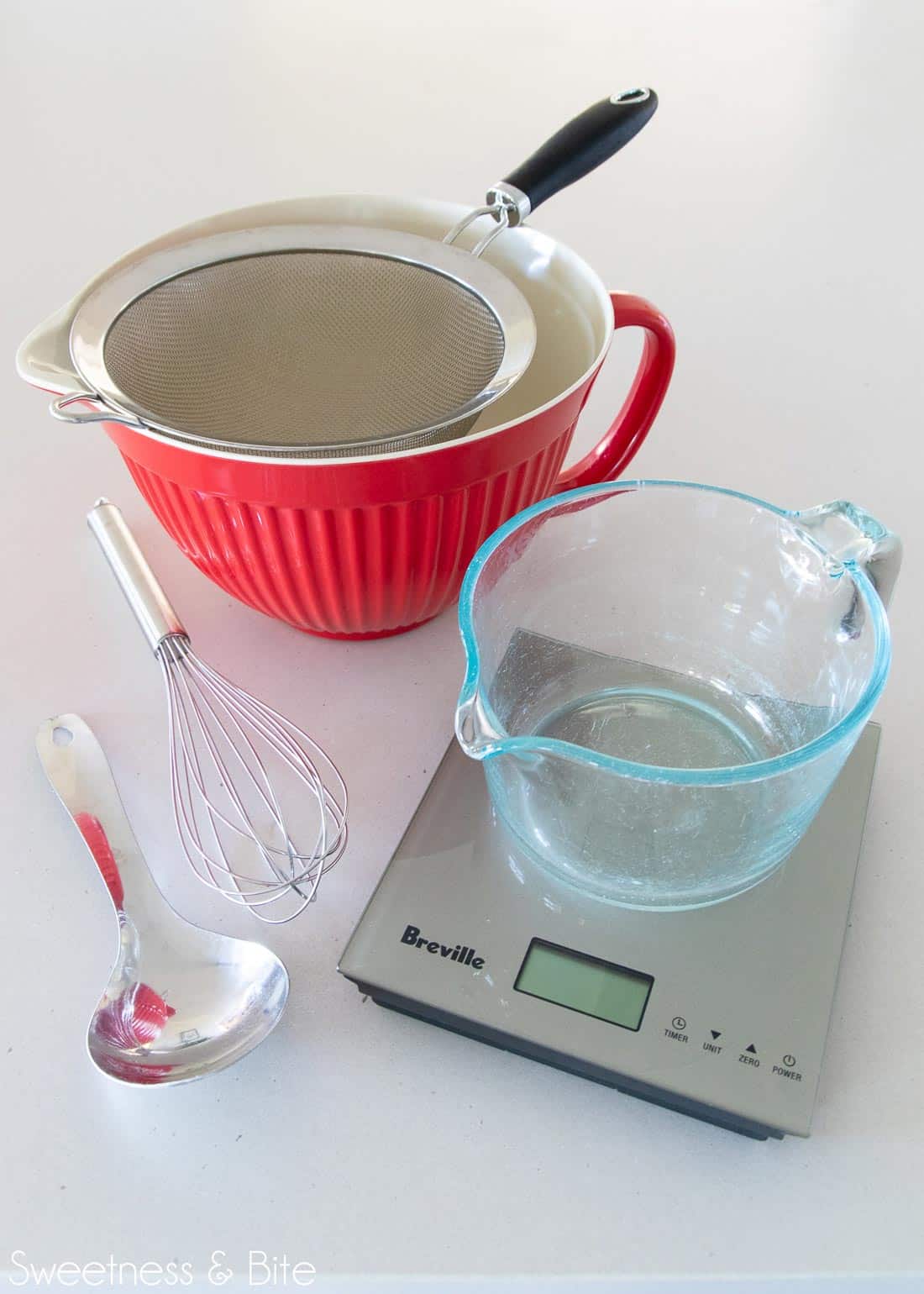
I like to use a spoon to start mixing, as it will bring the flour up from the bottom of the bowl, then I switch to a whisk to finish blending it all together.
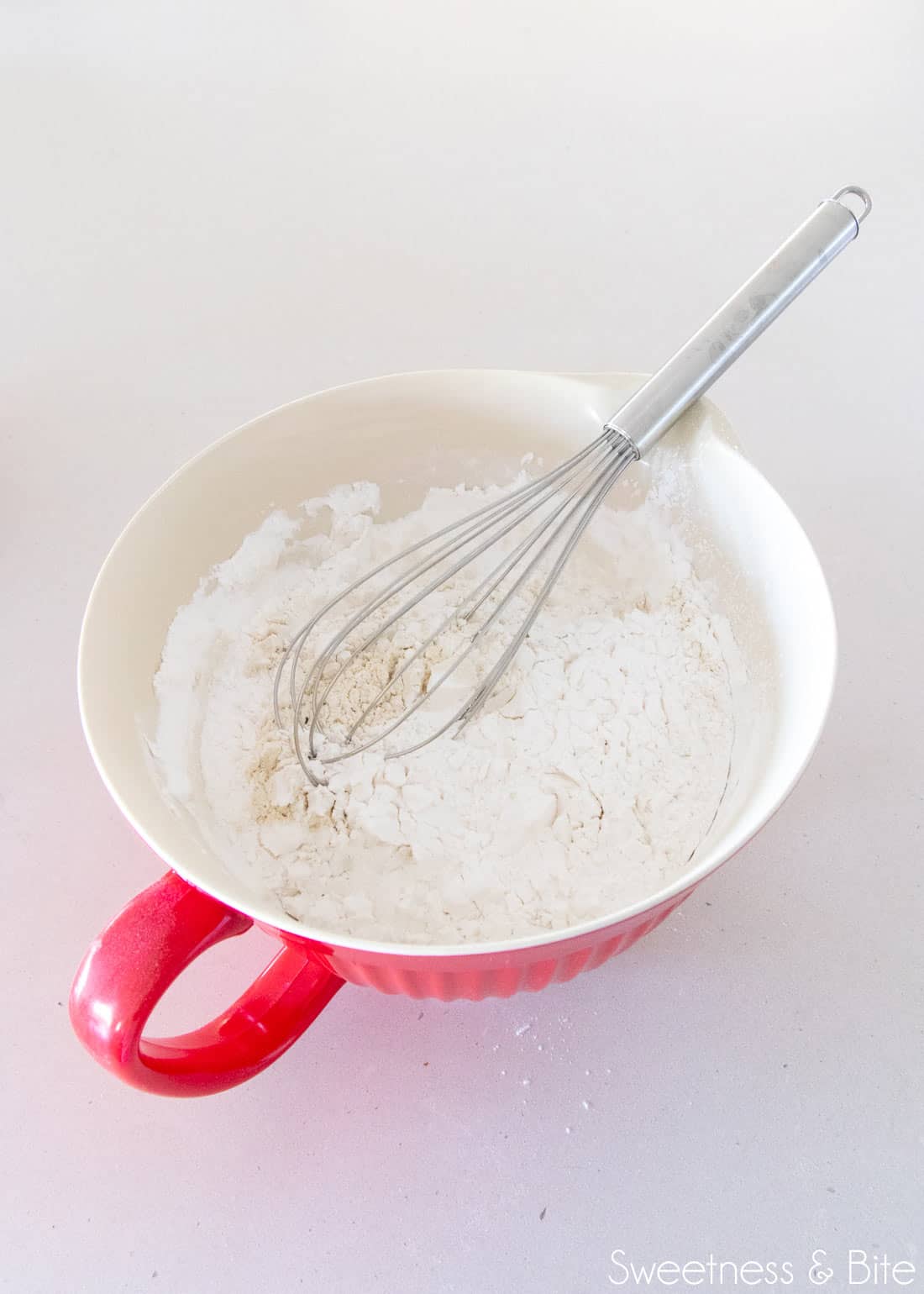
Once finished, you shouldn’t be able to see any streaks of individual flour – it should all be a uniform colour.
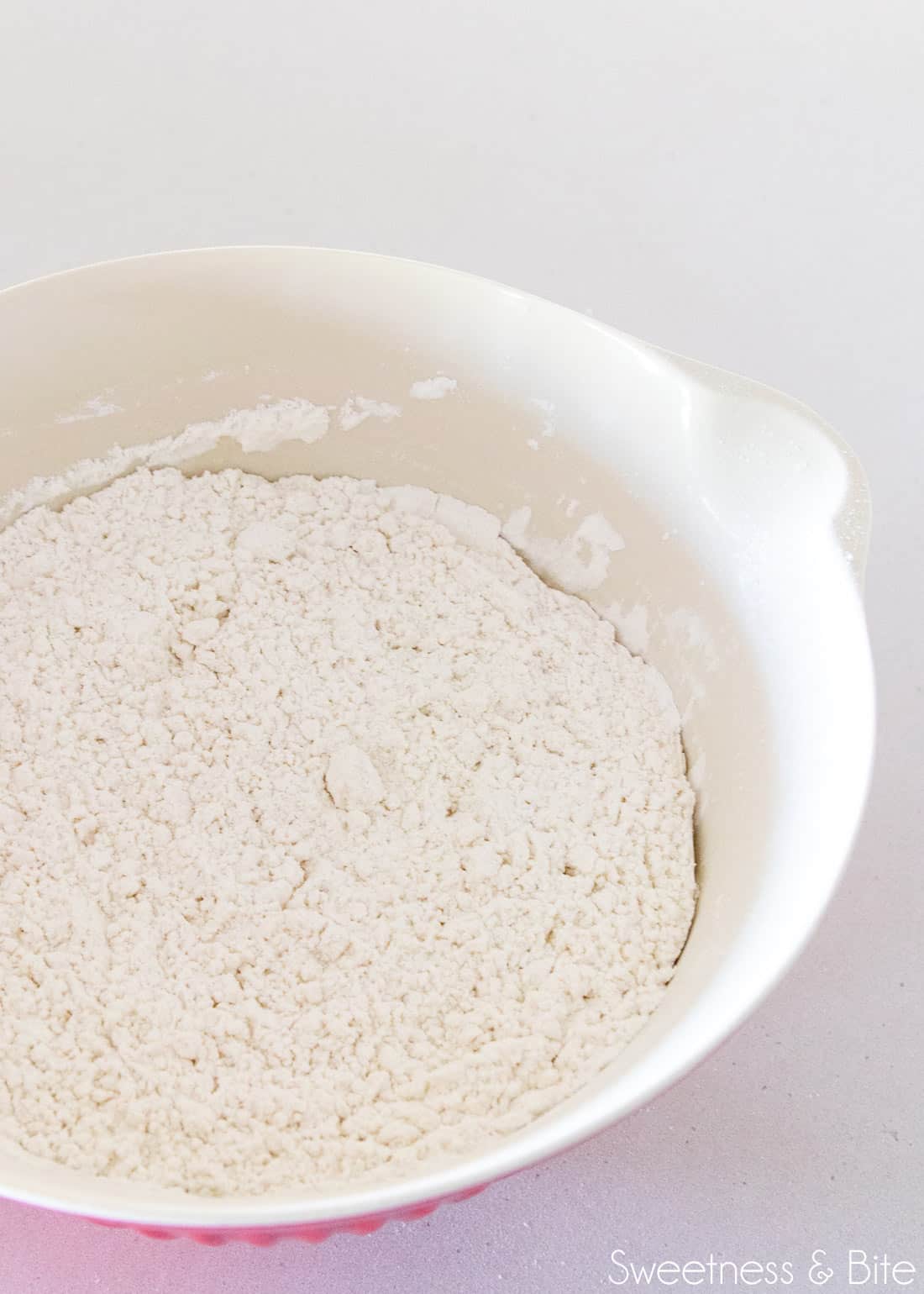
Then transfer your flour to an airtight container or jar to store it.
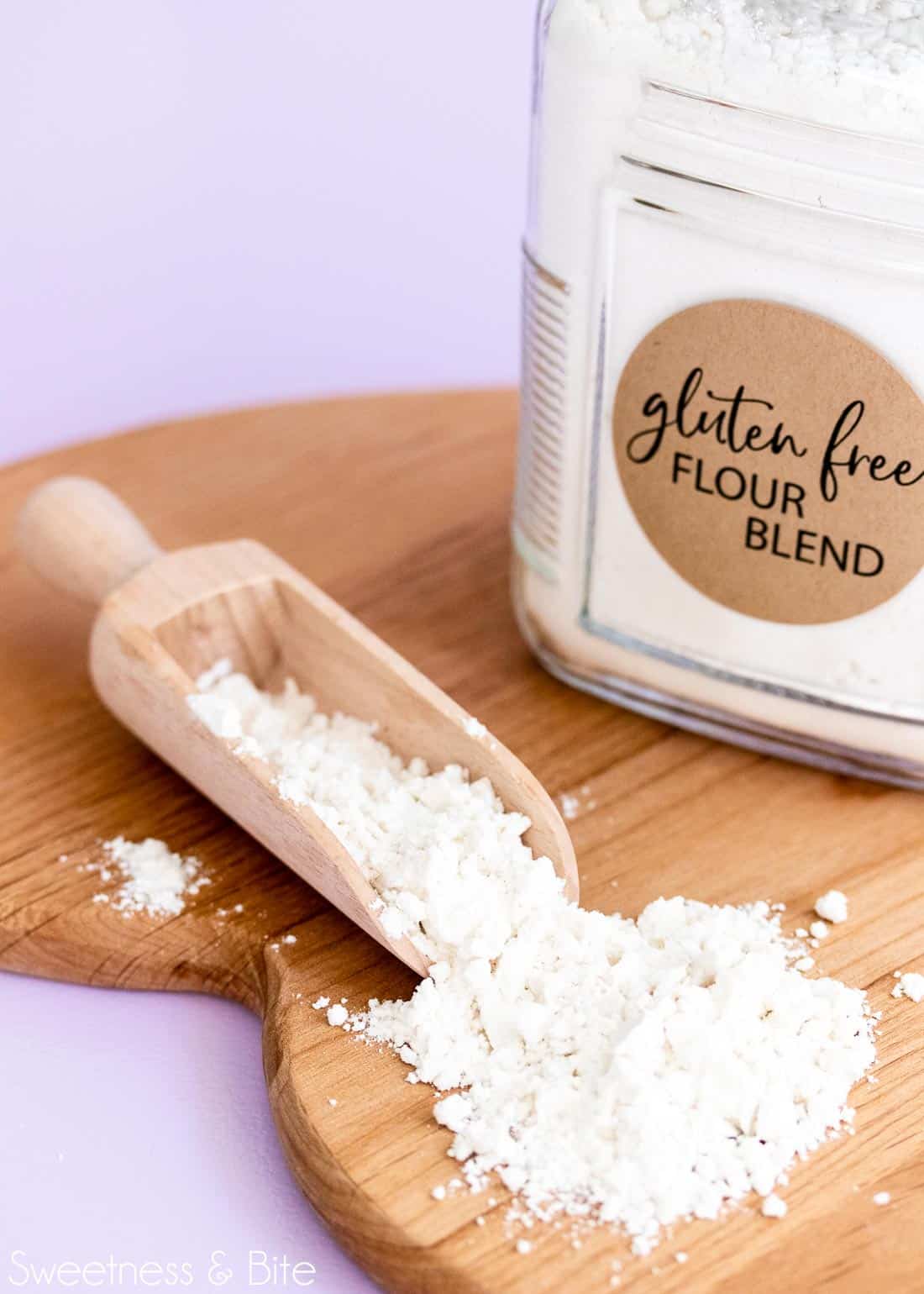
I usually try and take note of the best-before dates on each of the flours and label the flour blend with the earliest of those dates. But provided the flour is kept airtight and in a cool, dark place it will generally keep well for several months.
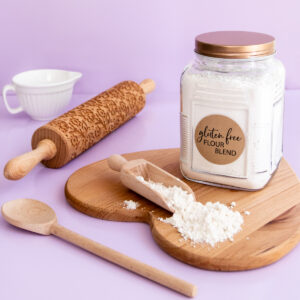
Gluten Free Baking Flour Blend
Ingredients
To Make 1 Kilogram:
- 500 g tapioca starch
- 400 g brown rice flour
- 100 g potato starch
To Make 2 Kilograms:
- 1 kg tapioca starch
- 800 g brown rice flour
- 200 g potato starch
To Make 3 Kilograms:
- 1.5 kg tapioca starch
- 1.2 kg brown rice flour
- 300 g potato starch
Instructions
- Sift the tapioca starch, brown rice flour and potato starch into a large bowl. Mix together thoroughly using a large spoon and/or whisk. The flours are properly blended when the mixture is a uniform colour with no streaks of individual flours visible.
- Transfer to an airtight container and store in a cool, dark pantry.
- I usually try and take note of the best-before dates on each of the flours and label the flour blend with the earliest of those dates. But provided the flour is stored correctly it will generally keep well for several months.
Notes
Nutritional Disclaimer: Any nutritional info provided is a computer generated estimate and is intended as a guide only.
Gluten Free Baking Flour Blend FAQ
Most likely, yes! But for best results, make sure you use weight measurements and not cup measurements. Replace the wheat flour weight for weight with this blend, and add xanthan gum as needed. You may need to experiment a little, but this is a great starting point.
This is the flour blend that I use for pretty much all of my baking. I use it for cakes, cupcakes, cookies/biscuits, brownies, slices, scones, muffins and quick-mix bread. However, I haven’t tested it extensively with yeast bread recipes.
For a standard-sized cake or cupcake recipe, I recommend 1 teaspoon of xanthan gum. For a standard-sized cookie, slice or brownie recipe, 1/2 a teaspoon of xanthan gum should be enough. If you make the recipe and the end result is crumbly, then increase the gum next time. If it comes out gummy or rubbery, then reduce it.
For all of the recipes on Sweetness and Bite, I will tell you how much xanthan gum you need to add.
You can try it, but keep in mind that your end result will likely be crumblier, and things like cakes and cupcakes may be more prone to sinking, without the xanthan gum to provide extra structure to hold them up.
While your flour blend won’t end up exactly the same as mine, you can most likely successfully replace the brown rice flour with the same weight of white rice flour or sorghum flour, and the potato starch with cornstarch, or tapioca starch with half cornstarch and half white rice flour.
Whether any flour has a smell or a taste is a matter of personal opinion. Keep in mind that wheat flour has a smell and taste, too. So yes, this is different to wheat flour, but is it a taste or smell that you notice in your baking? My answer is a definite no. You shouldn’t notice any difference in smell or taste in your baked goods. If you do, give your component flour a sniff and see if you can find the culprit, it may be that one of them has gone off.
As always, if you have any questions, leave a comment below and we can chat about it!
Happy baking!
Natalie
xx

